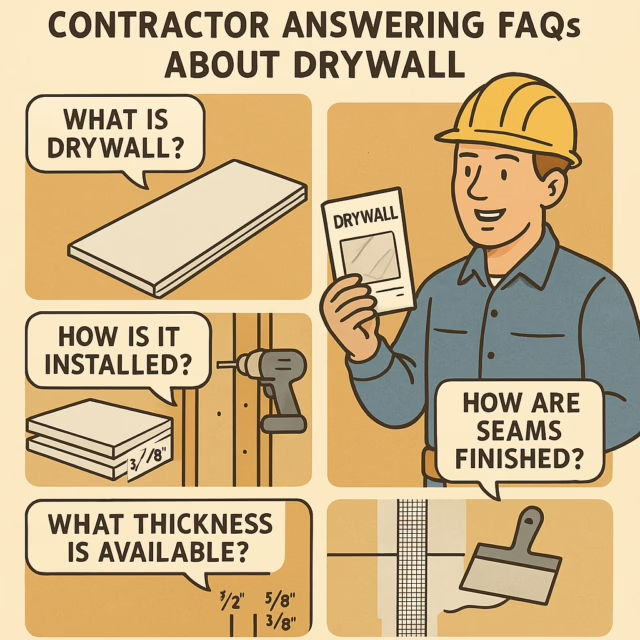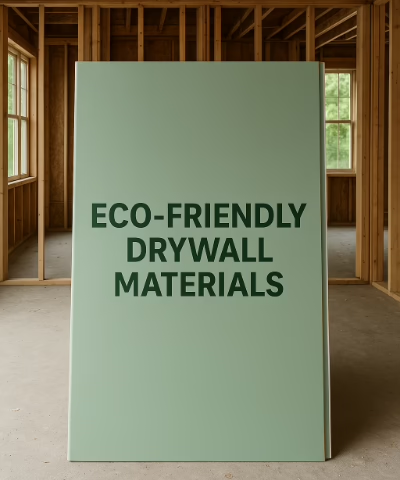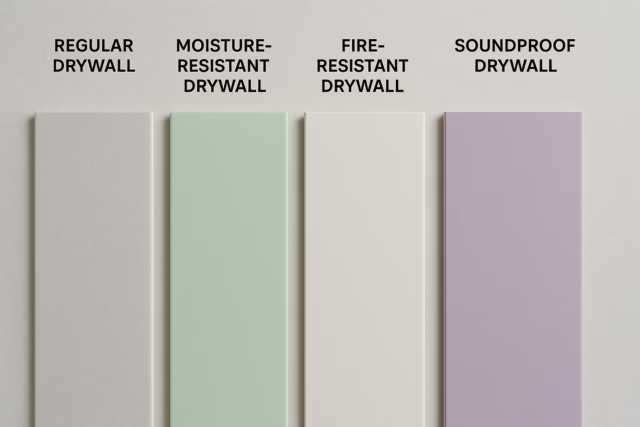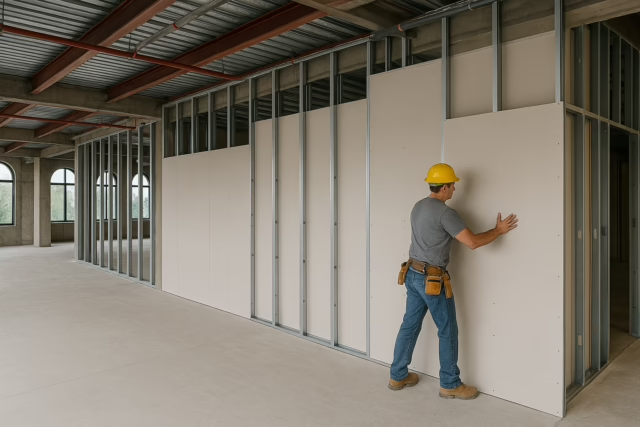How to Choose the Best Baseboards for Your Home’s Style and Functionality
Choosing the right baseboards is an essential step in completing the look of any room. But how do you know which one is right for your space? If you’ve ever wondered how to choose the best baseboards, you’re not alone. Many homeowners underestimate how much baseboards can influence a room’s overall design. Baseboards aren’t just decorative; they also protect walls from wear and tear, making it crucial to select the perfect one for both style and functionality.
In this guide, we’ll explore how to choose the best baseboards for your home, considering factors like material, design, and practicality. Whether you’re after a sleek modern look or a more traditional style, there’s a perfect baseboard out there for you. For professional help in selecting or installing baseboards, companies like HD Drywall offer expert services to ensure your project is a success.
Why Baseboards Are Important in Interior Design
Before diving into how to choose the best baseboards, it’s helpful to understand their importance. Baseboards are the finishing touch that pulls together the walls and floors of a room, adding structure and visual balance. Without them, even the most stylish spaces can look incomplete. Baseboards also serve practical purposes, like hiding gaps between the floor and wall, covering imperfections, and protecting the lower part of the wall from damage.
Considering the impact they can have, it’s crucial to choose baseboards that complement your home’s design and function well in the space. Whether you’re remodeling or simply updating a room, baseboards can make all the difference.
Factors to Consider When Choosing Baseboards
When learning how to choose the best baseboards, there are several factors to consider. These include the style of your home, the material you prefer, and the height of the baseboards in relation to your ceiling and walls. Let’s break down these considerations:
- Style of Home: The baseboard design you choose should match your home’s aesthetic. Sleek, flat baseboards are ideal for modern homes, while more detailed, decorative baseboards fit better with traditional interiors.
- Material: Baseboards come in various materials, including wood, MDF, and PVC. Each material has its pros and cons, depending on your budget, room conditions, and desired look.
- Height: Baseboard height is an important factor. Higher baseboards (6 inches or more) create a dramatic effect, while shorter baseboards work better in rooms with lower ceilings or simpler designs.
If you’re unsure which style best suits your space, experts at HD Drywall can provide personalized advice and installation services.
Choosing the Right Material for Your Baseboards
One of the most important decisions when choosing baseboards is the material. Different materials offer varying levels of durability, maintenance, and aesthetic appeal. Here’s a quick rundown of the most common materials for baseboards:
- MDF (Medium Density Fiberboard): MDF is a popular choice due to its affordability and smooth finish, making it easy to paint. However, it’s less durable than wood and can swell in moisture-prone areas, like bathrooms.
- Wood: For a classic, natural look, wood baseboards are a great option. They can be painted or stained and are highly durable. However, they tend to be more expensive and require regular maintenance.
- PVC: If you need baseboards for moisture-heavy areas, like kitchens or bathrooms, PVC is a durable, water-resistant option. PVC baseboards are low-maintenance and easy to clean but don’t offer the natural appeal of wood.
Each material has its strengths and weaknesses, so consider your specific needs before making a decision. For more help selecting the right material, HD Drywall can guide you through the options.
Matching Baseboards to Your Home’s Aesthetic
Another key element in learning how to choose the best baseboards is ensuring that they match your home’s aesthetic. Modern homes often benefit from sleek, minimalistic baseboards, like flat panels that blend seamlessly with the walls. In contrast, traditional or transitional homes might look best with more detailed baseboards featuring beveled edges or intricate moldings.
- Modern and Minimalistic Homes: Flat baseboards with a height of 3 to 5 inches work best. They provide a clean look without drawing too much attention.
- Traditional Homes: Opt for taller baseboards (6 inches or more) with decorative edges or moldings. These create a more elegant, timeless appearance.
- Transitional Homes: You can mix elements of both modern and traditional styles. Try combining flat baseboards with subtle curves or small detailing for a balanced look.
By aligning the baseboards with the style of the room, you’ll create a cohesive design that enhances the overall feel of the space.
Considering Baseboard Height for Room Proportion
Another often overlooked factor in choosing baseboards is their height. Taller baseboards are a popular trend in modern homes, but the size of the room, ceiling height, and design style should determine the best choice.
- Low Ceilings: If your room has low ceilings, stick to shorter baseboards (3 to 4 inches) to maintain balance. Taller baseboards may overwhelm the space.
- High Ceilings: Rooms with higher ceilings can handle taller baseboards (5 to 8 inches), which create a bold, dramatic effect.
To ensure you choose the right height for your room, feel free to consult with HD Drywall for expert installation and style recommendations.
Finishing Touches: Paint or Stain
After selecting and installing the baseboards, the final decision is whether to paint or stain them. White paint is a popular choice, offering a clean, crisp look that contrasts with the walls and floors. However, if you prefer a natural, warm aesthetic, staining the baseboards to show off the wood’s grain can add character to the room.
When choosing a finish, make sure it complements your wall color and overall design. Whether you opt for paint or stain, this final step will make your baseboards stand out and bring the room together. If you’re unsure which option best fits your home, HD Drywall can offer professional advice on finishes and installation.
Conclusion
Understanding how to choose the best baseboards involves considering multiple factors, including style, material, height, and finish. Whether you’re aiming for a sleek, modern look or a more traditional design, the right baseboards can transform the appearance of your room, making it feel complete and polished. With the variety of options available, you can easily find the perfect baseboards to enhance your home’s design.
If you’re ready to get started but need expert help, HD Drywall offers professional baseboard installation and design services to ensure you get the perfect fit for your space.
FAQs
What materials should I choose for baseboards?
- MDF, wood, and PVC are common options. MDF is affordable, wood offers a classic look, and PVC is ideal for moisture-prone areas.
How tall should my baseboards be?
- Baseboard height depends on room size and ceiling height. Shorter baseboards work best for low ceilings, while taller ones are great for high-ceilinged rooms.
Can baseboards be painted or stained?
- Yes, you can paint baseboards for a crisp, modern look or stain them to showcase natural wood grain for a warmer aesthetic.
Which baseboard style suits a modern home?
- Flat, sleek baseboards with minimal detailing work best for modern homes, adding a clean, polished look.
Are taller baseboards better for all rooms?
- Not necessarily. Taller baseboards create a dramatic effect but may overwhelm smaller rooms or spaces with low ceilings.
Do baseboards improve the value of a home?
- Yes, well-chosen baseboards add a finished, high-quality look to any room, potentially increasing your home’s resale value.






